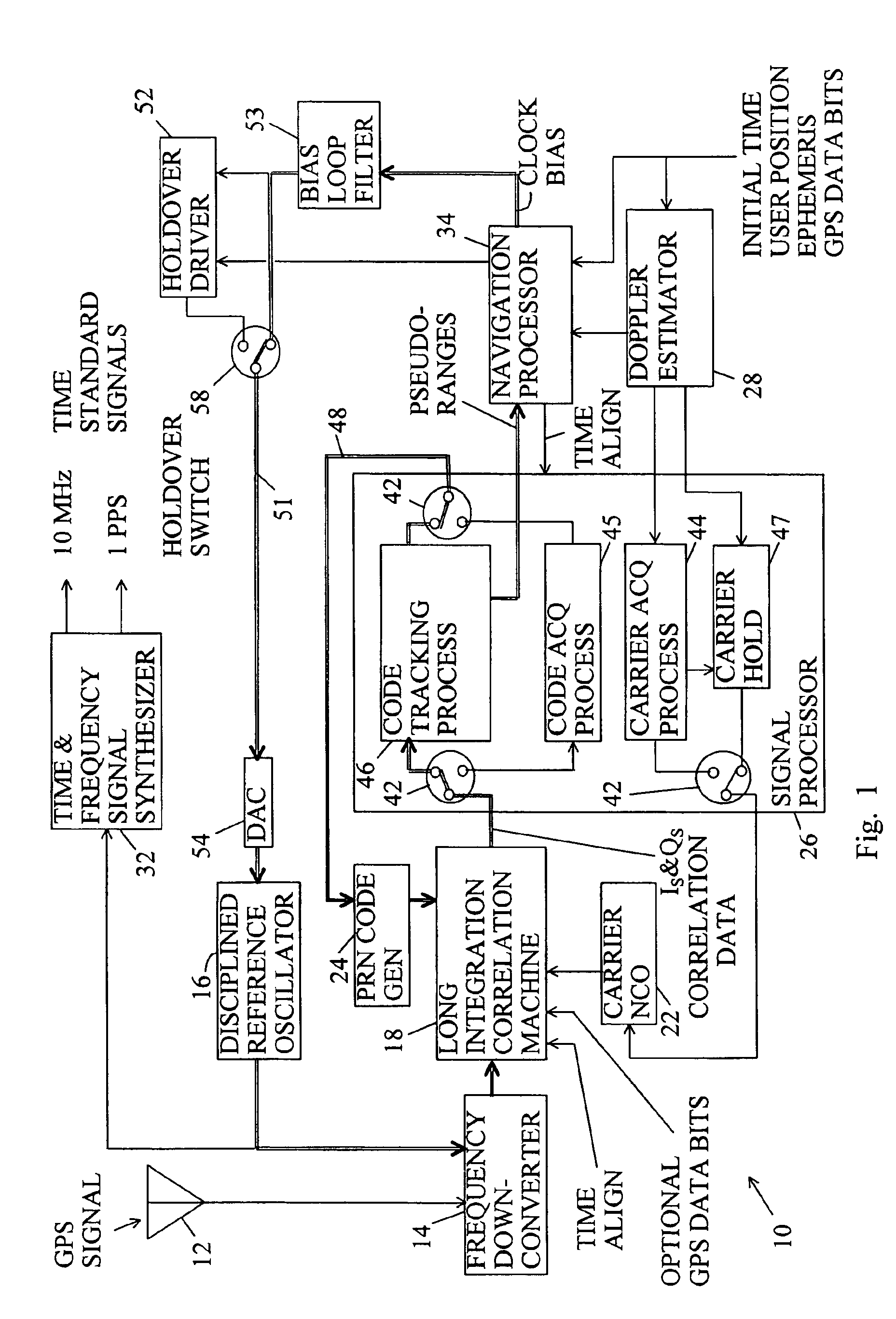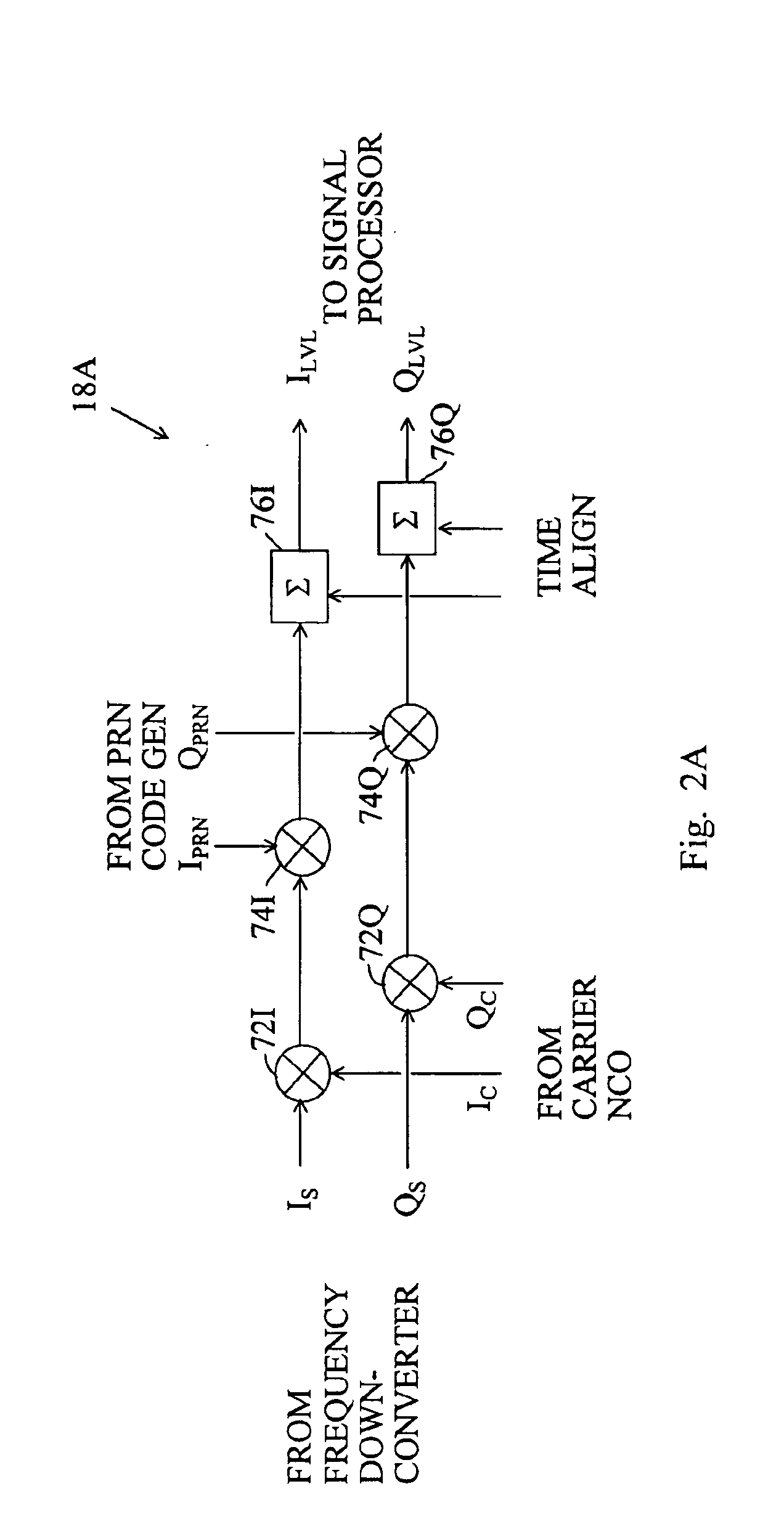Indoor GPS clock
a gps clock and indoor technology, applied in navigation instruments, instruments, horology, etc., can solve the problems of inability to accept limitations, inability to accurately calculate gps time, and inability to function well within a building, so as to achieve accurate gps-based frequency and time.
- Summary
- Abstract
- Description
- Claims
- Application Information
AI Technical Summary
Benefits of technology
Problems solved by technology
Method used
Image
Examples
Embodiment Construction
FIG. 1 is a block diagram of an indoor GPS clock of the present invention referred to with a reference number 10. It is expected that the indoor GPS clock 10 is maintained in a single user location for any one period of operation. To initialize the operation, the indoor GPS clock 10 receives information for an accurate user location, recent satellite ephemeris parameters, and time to within ±½ millisecond. In an exemplary case, the user location can be determined with survey techniques and the ephemeris parameters can be received and updated from a network connection.
The initial ±½ millisecond time can be determined by the indoor GPS clock 10 itself by operating first outdoors in the manner of a conventional GPS receiver. The indoor GPS clock 10 is then carried indoors to its user location. Or, when one strong GPS signal is available, for example from a pseudolite or a GPS satellite with line of sight through a window, the indoor GPS clock 10 can determine the initial ±½ millisecond...
PUM
 Login to View More
Login to View More Abstract
Description
Claims
Application Information
 Login to View More
Login to View More - R&D
- Intellectual Property
- Life Sciences
- Materials
- Tech Scout
- Unparalleled Data Quality
- Higher Quality Content
- 60% Fewer Hallucinations
Browse by: Latest US Patents, China's latest patents, Technical Efficacy Thesaurus, Application Domain, Technology Topic, Popular Technical Reports.
© 2025 PatSnap. All rights reserved.Legal|Privacy policy|Modern Slavery Act Transparency Statement|Sitemap|About US| Contact US: help@patsnap.com



